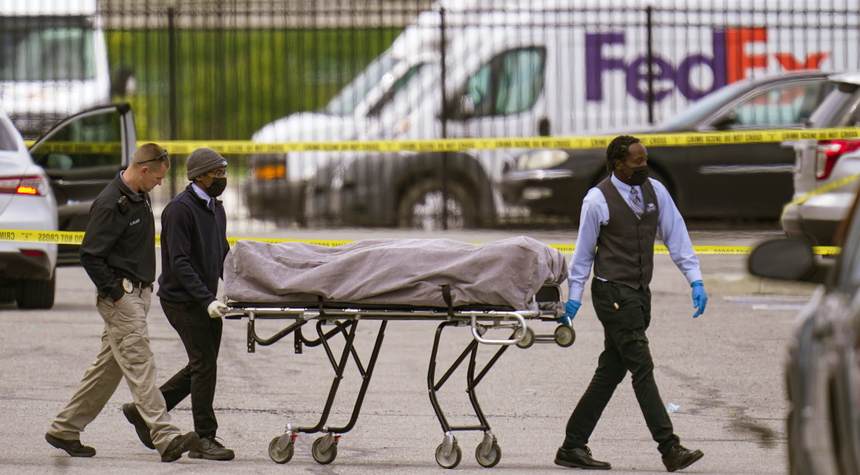I have long deplored the poverty of international relations (IR) theory, which pits “realists” of all varieties against “liberals” or advocates of “liberal internationalism” and its corollary, “cooperative security.” In essence, the debate between these two schools is a dispute between Thucydides and Machiavelli on the one hand and Kant on the other.
Realists argue that states are driven by naked interest. In a system of “international anarchy,” states face a security dilemma that leads to arms racing, offensive and defensive alliances, and ultimately war. For realists, the international system is conflictual. In contrast, liberal internationalists argue that the international system is potentially cooperative. Diplomacy trumps force. For realists, liberals are too abstract and place too much emphasis on the “good side” of human nature. For liberals, realists are too pessimistic and cynical. In addition, say liberals, realism is too parsimonious: it fails adequately to explain the world.
Unfortunately for both parties, this sterile debate has never been able to fully encompass U.S. foreign policy. Of course, the United States has pursued its interests in the international arena. But an important U.S. interest has long been the maintenance of a liberal international order, which seeks to maximize liberal principles such as liberty, free trade, and prosperity.
As I argued four years ago in a piece for American Greatness, the United States has been most successful when it has adhered to a foreign policy of “prudent American realism” linking American principles with prudence, which, as Aristotle argued, is the virtue most characteristic of the statesman, requiring as it does the ability to choose the best means for achieving good ends.
Prudent American realism differs from the realism taught as part of academic international relations courses. American realism has always fused the features of traditional realism—power and security—with prosperity and the preservation of American principles. George Washington articulated this unique American realism in his Farewell Address:
If we remain one People, under an efficient government, the period is not far off, when we may defy material injury from external annoyance; when we may take such an attitude as will cause the neutrality we may at any time resolve upon to be scrupulously respected; when belligerent nations, under the impossibility of making acquisitions upon us, will not lightly hazard the giving us provocation; when we may choose peace or war, as our interest guided by justice shall Counsel.
Like liberal internationalism, prudent American realism recognizes that the internal character of regimes matters and that our foreign policy must reflect the fundamental principles of democratic republicanism. But unlike liberal internationalism, which holds that international law and institutions alone are sufficient to achieve peace, prudent American realism understands that there are certain problems that can be addressed only through the prudent exercise of power.
In addition to fusing principle and prudence, prudent American realism stresses several operational concepts. First, it distinguishes between friends and allies, on the one hand, and enemies and adversaries, on the other. Second, prudent American realism stresses forward defense, forward presence, and freedom of navigation. Its geostrategic goal is to maintain the traditional U.S. maritime alliance along what Nicholas Spykman called the “rimlands” of Eurasia, designed to keep a potential Eurasian hegemon contained.
Third, prudent American realism recognizes that the internal character of regimes matters for U.S. foreign policy, a principle that also can be found in Thucydides, who noted that an important goal of both Athens and Sparta was to establish and support regimes similar to their own, democracies in the case of Athens and oligarchies for Sparta. The inference one can draw is that the security of a state is enhanced when it is surrounded by others that share its principles and interests.
But although the internal character of regimes matters, prudent American realism also very much recognizes the need to limit our aspirations when it comes to “spreading democracy” abroad. Again, “prudence” is the operative term here. For one thing, “democracy” is not always liberal democracy. For another, our resources are finite, and good strategy requires the United States to prioritize among the goals it wishes to accomplish. Finally, as Afghanistan illustrated, the character of any given people does not always make them a good candidate for democracy.
Fourth, prudent American realism recognizes the classical connection between force and diplomacy. For too long, American policy makers, motivated by the assumptions of liberal internationalism, have acted as if diplomacy alone is sufficient to achieve our foreign policy goals. But as Frederick the Great once observed, “Diplomacy without force is like music without instruments.” Prudent American realism recognizes that diplomacy and force are two sides of the same coin.
Finally, prudent American realism does not hesitate to use economic power as an instrument of foreign policy. Finance, trade, technology, and energy are powerful means of leveraging national power.
The foreign policy of the Reagan Administration, which brought down the Soviet Empire, was a species of prudent American realism. It successfully linked principle and power in a way consistent with the existing realities of the international arena. Since the 1990s, however, U.S. foreign policy has been characterized by a hubris that is at odds with prudence.
The Clinton, Obama, and now the Biden Administrations have placed their faith in international institutions and their conviction that the main use of U.S. power was to support these institutions. All too often, the goal of these Democratic administrations was to create a “global good,” a corporatist globalism divorced from American patriotism or national greatness. In addition, these Democratic administrations consistently have failed to make the fundamental distinction between friends and allies on the one hand, and enemies and competitors on the other. The result has been a loss of faith in the United States by our allies while our enemies have been emboldened.
For its part, the George W. Bush Administration quixotically embarked on a quest to reshape the world in a liberal image. That quest foundered on the shoals of tribalism and religion in Afghanistan and Iraq. This hubristic effort to reshape the international system ironically contributed to the rise of China in two ways: first by expending precious resources on the post-9/11 wars; and by acting on the false belief that China was willing to abide by the “norms” of liberal internationalism.
It is interesting to note that given the almost universal condemnation of the Trump Administration’s foreign policy by the U.S. “national security community,” Trump’s approach most closely approached the practice of prudent American realism. The first feature of Trump’s foreign policy was its foundation on a healthy nationalism. This nationalism was not the nationalism caricatured by Trump’s critics; it is not a reflection of racism and disdain for foreigners. It was not ethnic or racial nationalism but civic nationalism, better described as patriotism. Consistent throughout his presidency was the belief that the purpose of American power is to advance the interests of American citizens.
The second feature, and a corollary of the first, was its state-centric view of international politics, one that approaches international institutions and “global governance” with great skepticism. In his May 2017 speech in Saudi Arabia, Trump called his approach “principled realism.” It is in the interest of the United States to advance U.S. political, military, and economic strength, not to impose America’s will on others but to secure the blessings of liberty to ourselves and our posterity. As Henry Nau argues, “The goal [of U.S. foreign policy] is a ‘republican world’ in which free nations live side by side, responsible for their own defenses and economies, and cut deals with other nations, including authoritarian ones, to the extent their interests overlap.”
By extension, U.S. foreign policy under Trump acted on the belief that the United States should not cede sovereignty to international institutions in order to be embraced by the mythical “international community.” Although it is in the interest of the United States to cooperate with others within this international system, such cooperation depends on reciprocity. This has been especially important in the areas of trade and alliances. In principle, free trade is good for countries in the international system. Trump contended that for too long, however, the United States had pursued trade agreements that harmed our interests. The principle of reciprocity was necessary to redress this imbalance.
The third feature was armed diplomacy. American policymakers have long treated force and diplomacy as an either/or proposition. But understood properly, force and diplomacy are two sides of the same coin. The threat of force increases the leverage of diplomats. The Trump Administration’s approach to Iran and North Korea is a case in point.
The fourth feature of Trump’s foreign policy was to prioritize economic growth and leverage the new geopolitics of energy. The Trump Administration moved expeditiously to lift regulations that hamper U.S. domestic productivity across the board, but especially in the area of energy production. While domestic oil and gas production has increased as a result of the revolution associated with hydraulic fracturing (“fracking”) and directional drilling, it did so despite the priorities of the Obama Administration, which wished to decrease reliance on hydrocarbons. Trump made it clear he wishes to exploit America’s energy potential to take advantage of the new geopolitics of energy.
Finally, Trump’s foreign policy advanced a defense of liberal principles. The United States is safer and more prosperous in a world populated by other democratic republics, yet prudence dictates that the attempt to spread our principles must be both strategic and cost-effective.
Trump was roundly criticized by advocates of “cooperative security.” The problem with cooperative security is that it requires states in the international system to subordinate their interests to a fictional “international community” and act in accordance with a system that operates independently of national interest. Cooperative security also wrongly assumes that international participation is sufficient to sustain the liberal world order. It is not. It must be supported by a dominant power and influence.
Free trade and the expansion of the liberal political order are certainly good for America. But all too often, U.S. policymakers have made a fetish of international organizations. Both are means, not ends. In fact, the end or purpose of American power should be to secure the American Republic, protect its liberty, and facilitate the prosperity of its people. The United States is not “entitled” to wield its power for the “global good.” Trump’s election in 2016 was due in part to the perception that U.S. power was not being used to advance the interests of Americans but rather to serve others, i.e., the “international community,” international institutions, or the like.
In both the short and long term, a foreign policy of prudent American realism is the best hope for assuring the freedom, security, and prosperity of the United States. This is the best approach for enhancing American power, influence, and credibility.










